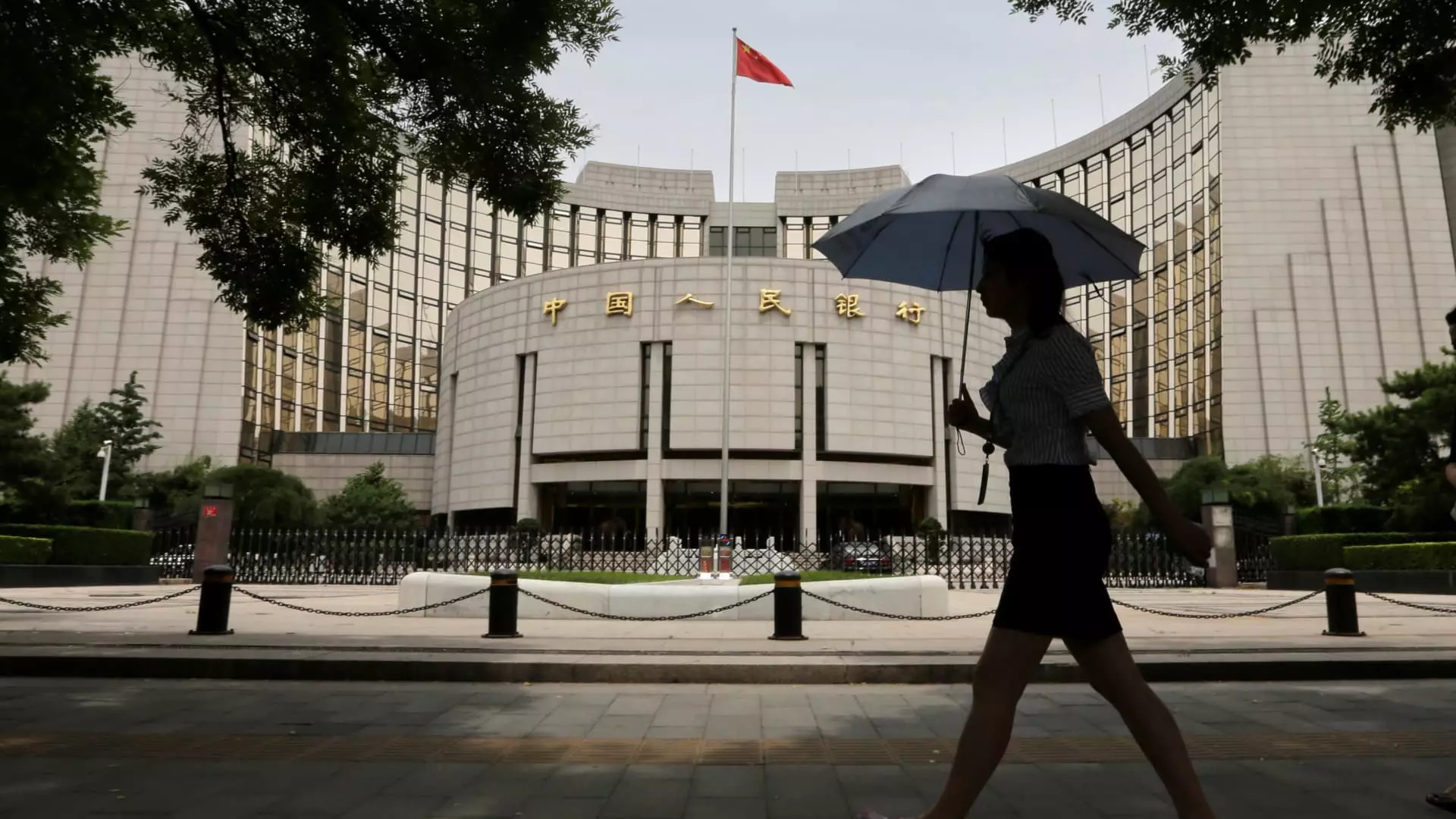The anticipation surrounding the U.S. Federal Reserve’s decisions on interest rates this week has implications that extend beyond American borders, particularly towards the Chinese economy. While a slowdown in rate hikes in the U.S. is largely expected, a key consequence of this shift may give the People’s Bank of China (PBoC) more latitude to implement its own monetary easing strategies. As the financial landscape evolves, this prospect raises important questions about the underlying dynamics affecting Chinese stocks and the broader market environment.
Global analysts, including those from HSBC, suggest that a more accommodating monetary policy from the U.S. could significantly benefit growth sectors within Chinese equities. Analysts point out that historical data indicates a marked difference in performance: growth sectors may exceed value sectors by an impressive 44 percentage points. This correlation stems from the higher price-to-earnings ratios that growth-focused stocks are anticipated to command as market conditions change. The focus, however, remains squarely on earnings growth as the primary driver of this anticipated market shift.
Despite the promising prospects tied to a potential reduction in interest rates, experts caution that mere monetary easing may not suffice in invigorating investor interest in Chinese stocks. Laura Wang, Morgan Stanley’s chief China strategist, emphasizes that fundamentals are paramount when it comes to attracting global capital to China’s equity markets. Although interest rate cuts can stimulate spending and investment, they cannot independently rectify macroeconomic weaknesses and structural issues within the Chinese market that have undergone prolonged stagnation.
The Chinese market’s robust performance is particularly challenged by low consumer price index figures, highlighting an alarming trend of deflationary pressures. The August core consumer price index, which filters out volatile food and energy prices, reflected a mere 0.3% increase year-over-year, indicating consumer malaise. Consequently, former PBoC governor Yi Gang’s statements underline a pressing need for a concerted effort to combat deflation and re-establish confidence among consumers and businesses alike.
In addition to consumer hesitance, capital expenditures among businesses have also been sluggish. The first half of the year witnessed a 4% decrease in capital spending—the slowest pace since 2017—with only specific sectors like internet and automotive showing relatively favorable earnings. This decline in investment is troubling and suggests a lack of confidence among businesses regarding future economic conditions. James Wang from UBS noted that while some sectors are performing well, overall, the environment remains cautious.
The view from the PBoC has been pragmatically proactive concerning the interplay between U.S. policies and domestic economic measures. The acknowledgment of the Fed’s influence on Chinese monetary policy coupled with an emphasis on addressing deflationary concerns signals urgency for broader economic revitalization. It is abundantly clear that simply cutting interest rates or issuing long-dated bonds will not be enough if businesses and households remain reticent about spending.
As market analysts examine potential gains stemming from a change in U.S. fiscal policy, the outlook remains tempered by caution. Although HSBC forecasts positive returns for specific Chinese indices in the wake of a Fed rate cut, the projections are inherently tied to the assumption that the U.S. economy would remain stable and avoid recession. Such an assumption evokes skepticism, as it relies on a delicate interplay of global economic conditions.
Moreover, the search for Chinese stocks poised to benefit from reduced borrowing costs presents complexities. High-debt companies may be scrutinized more critically in an uncertain economic environment because the assumption of growth in revenue amid high leverage raises red flags for investors. Potential beneficiaries of lower interest rates such as Muyuan Foods, China Southern Airlines, and Hengli Petrochemical could perform well; however, the overarching narrative focuses on earnings growth, risk management, and overall market sentiment.
The impending decisions from the U.S. Federal Reserve represent a critical juncture for both American and Chinese markets, with potential ramifications that could redefine investor sentiment and allocation strategies. Yet, as the landscape develops, it remains clear that much lies beyond simple monetary adjustments. For China’s stock market to thrive, attention must shift to bolstering investor confidence, enhancing consumer spending, and addressing the fundamental economic challenges that linger beneath the surface. As conditions evolve, maintaining a watchful eye on these multiple dimensions will be essential for stakeholders seeking to navigate the complexities of a changing economic environment.

